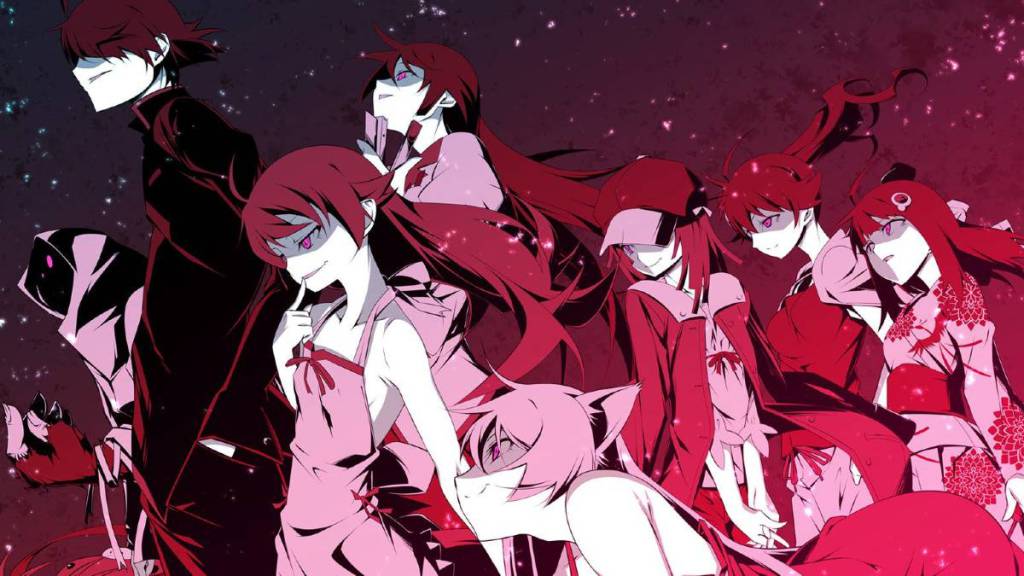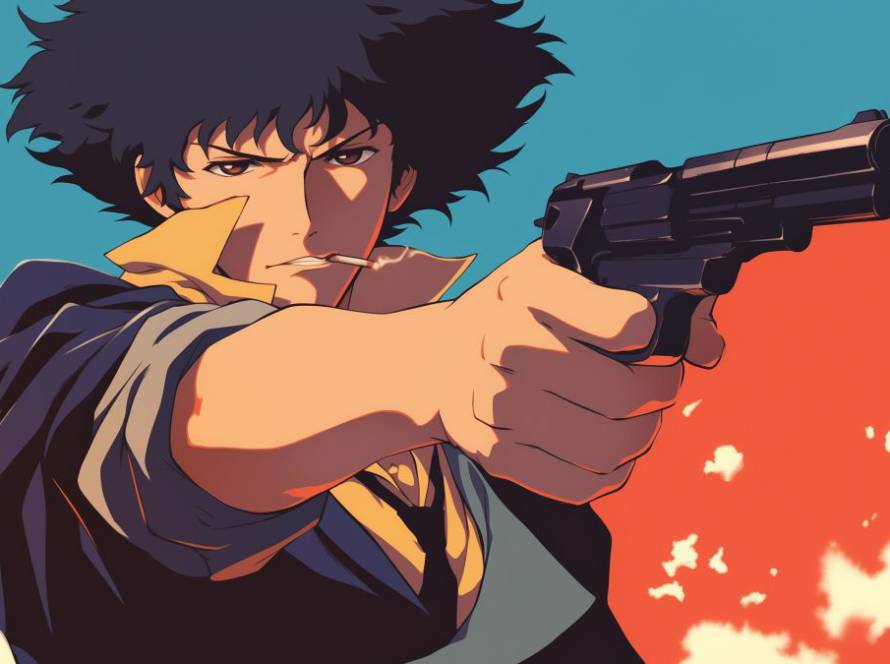Imagine a world where myths come to life, where supernatural beings walk among us, and where the boundaries between reality and fantasy blur. Welcome to the mesmerizing universe of the Monogatari Series – a realm where ancient legends intertwine with modern-day complexities, creating a tapestry of intrigue and wonder. 🌟
Have you ever found yourself captivated by stories that challenge your perception of reality? The Monogatari Series does just that, offering a unique blend of supernatural mysteries and deeply nuanced characters that will leave you questioning everything you thought you knew. From vampires and time travel to curses and apparitions, this anime franchise delves into the extraordinary while exploring the depths of human nature. 🧛♀️🕰️👻
Join us as we embark on a journey to unravel the intricate world of Monogatari. We’ll explore its mind-bending supernatural elements, analyze its complex characters, and delve into the visual storytelling that sets this series apart. Along the way, we’ll uncover the philosophical themes that lie beneath the surface and examine the lasting impact this groundbreaking franchise has had on the anime industry. Are you ready to dive into a world where nothing is quite as it seems? 🌀🔍

Understanding the Monogatari Series
Origin and Creator
The Monogatari Series, created by the prolific Japanese author Nisio Isin, began as a light novel series published by Kodansha. Nisio Isin’s unique storytelling style and VOFAN’s distinctive illustrations have made this series a standout in the world of Japanese literature and anime.
Unique Narrative Style
Monogatari’s narrative style is characterized by:
- Rapid-fire dialogue
- Wordplay and puns
- Unreliable narrators
- Non-linear storytelling
This approach creates a complex, layered experience that rewards attentive viewers and readers.
Blend of Supernatural Elements and Character-Driven Stories
The series masterfully weaves supernatural phenomena with deeply personal character arcs. Central to this is Koyomi Araragi, a high school student turned part-vampire, who encounters various “oddities” and the people affected by them. These supernatural elements serve as metaphors for the characters’ emotional and psychological issues.
Chronological vs. Release Order
One of the most intriguing aspects of the Monogatari Series is its non-linear narrative structure. The story unfolds across multiple timelines, with each installment revealing new layers of the overarching plot. This complexity has led to debates among fans about the best viewing order:
- Release order: Following the original publication sequence
- Chronological order: Arranging events as they occur in the story’s timeline
Each approach offers a unique experience, allowing viewers to uncover the mysteries of the Monogatari world in different ways.
Exploring the Supernatural Mysteries
In the Monogatari series, supernatural mysteries form the core of its intriguing narrative. These enigmatic elements not only drive the plot but also serve as metaphors for the characters’ inner struggles and growth.
Types of oddities and apparitions
The Monogatari universe is teeming with a diverse array of supernatural entities, known as “oddities” or “apparitions.” These include:
- Vampires: Powerful beings like Kiss-Shot Acerola-Orion Heart-Under-Blade
- Spirits: Such as the crab spirit that affects Hitagi Senjōgahara
- Cursed objects: Like the monkey’s paw that influences Suruga Kanbaru
- Manifestations of emotions: For instance, the cat spirit tied to Tsubasa Hanekawa’s stress
Role of folklore and Japanese mythology
Nisio Isin masterfully weaves Japanese folklore and mythology into the fabric of the Monogatari series. This integration adds depth to the supernatural elements and grounds them in cultural context. For example:
- The Kitsune (fox spirit) myth influences Yozuru Kagenui’s character
- The legend of Jagirinawa serpent is reimagined in Nadeko Sengoku’s arc
- The concept of Tsukumogami (objects gaining sentience) is explored through various oddities
Supernatural problem-solving techniques
Koyomi Araragi and his allies employ unique methods to address supernatural issues:
- Negotiation with oddities
- Ritual purification
- Confronting personal demons (literally and figuratively)
- Seeking help from supernatural experts like Meme Oshino
These techniques often require characters to face their inner turmoil, making the resolution of supernatural problems a metaphor for personal growth.
Complex Character Analysis
Koyomi Araragi: The reluctant hero
Koyomi Araragi, the protagonist of the Monogatari series, embodies the quintessential reluctant hero. As a former vampire, Araragi’s supernatural experiences shape his perspective and drive his actions. His selflessness often leads him to help others, even at great personal risk. However, this altruism is balanced by his internal struggles and moral ambiguity.
Hitagi Senjougahara: The tsundere with a dark past
Hitagi Senjougahara’s complex personality is a cornerstone of the series. Her sharp wit and acerbic tongue mask a deeply traumatic past, making her a prime example of the tsundere archetype. As the series progresses, we witness her gradual emotional opening, particularly in her relationship with Araragi.
Shinobu Oshino: The centuries-old vampire
Shinobu, formerly known as Kiss-Shot Acerola-Orion Heart-Under-Blade, is a vampire with a rich and tragic history. Her relationship with Araragi evolves from antagonistic to symbiotic, showcasing the series’ nuanced approach to character dynamics.
Supporting cast and their unique quirks
The Monogatari series boasts a diverse supporting cast, each with their own distinctive traits:
- Tsubasa Hanekawa: The class president with a split personality
- Suruga Kanbaru: The athletic girl with a monkey’s paw
- Nadeko Sengoku: The shy middle schooler with a snake oddity
- Karen and Tsukihi Araragi: Koyomi’s younger sisters with their own supernatural entanglements
Character development throughout the series
One of the Monogatari series’ strengths lies in its portrayal of character growth. As the narrative unfolds, we see:
- Araragi learning to balance his desire to help others with self-preservation
- Senjougahara softening her harsh exterior and embracing vulnerability
- Shinobu reconciling her past and forming a new identity
This intricate character development contributes significantly to the series’ depth and appeal, making it a standout in the realm of supernatural anime.
Visual Storytelling and Artistic Direction
SHAFT studio’s distinctive animation style
SHAFT studio’s unique approach to animation sets the Monogatari series apart from other anime. Their style is characterized by bold, experimental techniques that challenge traditional animation norms. The studio employs a mix of 2D and 3D elements, creating a visually striking and often surreal aesthetic that perfectly complements the series’ supernatural themes.
Symbolic imagery and metaphors
The Monogatari series is rich in symbolic imagery and visual metaphors, enhancing the storytelling and adding layers of meaning to each scene. For example:
- Tilted head angles representing character confusion or internal struggle
- Recurring motifs like spirals and circles symbolizing the cyclical nature of oddities
- Abstract backgrounds that reflect characters’ emotional states
These visual elements not only captivate the viewer but also provide deeper insights into the characters’ psyche and the overarching themes of the series.
Use of text cards and unconventional camera angles
SHAFT’s innovative use of text cards and unique camera angles further distinguishes the Monogatari series:
- Text cards: Often used to display internal monologues, crucial information, or literary references
- Dynamic camera work: Rapid cuts, extreme close-ups, and unconventional angles that create a sense of unease or excitement
- Breaking the fourth wall: Characters sometimes interact directly with on-screen text or visual elements
Color palette and its significance
The carefully chosen color palette in Monogatari series plays a crucial role in storytelling:
- Vibrant, saturated colors during intense emotional moments
- Muted tones for introspective or melancholic scenes
- Character-specific color schemes that reflect their personalities and supernatural affiliations
These visual storytelling techniques combine to create a unique and unforgettable viewing experience, elevating the Monogatari series beyond typical anime conventions.
Themes and Philosophical Undertones
The Monogatari series delves deep into profound themes and philosophical concepts, creating a rich tapestry of ideas that resonate with viewers long after the credits roll.
Identity and Self-Discovery
At its core, Monogatari explores the journey of self-discovery, particularly through Koyomi Araragi’s experiences. Characters often grapple with:
- Understanding their true selves
- Accepting their flaws and strengths
- Evolving through encounters with supernatural phenomena
The Nature of Human Relationships
Monogatari intricately examines human connections, highlighting:
- The complexity of romantic entanglements
- The power of friendship and loyalty
- The impact of family dynamics on personal growth
Confronting Personal Demons
A recurring theme is the characters’ struggle with inner turmoil:
- Literal and metaphorical demons representing personal issues
- The process of acknowledging and overcoming one’s weaknesses
- The role of support systems in facing internal conflicts
The Concept of Justice and Morality
The series challenges conventional notions of right and wrong:
- Blurring the lines between good and evil
- Exploring the consequences of well-intentioned actions
- Questioning the nature of justice in a world of supernatural oddities
The Power of Words and Communication
Monogatari emphasizes the significance of dialogue and storytelling:
- Words as tools for healing and harm
- The importance of honest communication in relationships
- The role of narratives in shaping reality and perception
These themes intertwine throughout the series, creating a complex philosophical landscape that invites viewers to reflect on their own lives and beliefs.
Impact and Legacy of Monogatari Series
Influence on anime industry
The Monogatari Series has left an indelible mark on the anime industry, revolutionizing storytelling techniques and visual presentation. Its unique blend of supernatural elements, complex character development, and philosophical discourse has inspired numerous creators to push the boundaries of anime storytelling.
Fan reception and cult following
The series has garnered a passionate and dedicated fanbase, known for its:
- In-depth analysis of characters and themes
- Active online communities discussing theories and interpretations
- Cosplay and fan art centered around the distinctive character designs
- Extensive merchandise collection, including light novels, manga, and figurines
Adaptations and spin-offs
Monogatari’s success has spawned various adaptations and spin-offs:
- Multiple anime seasons covering different arcs
- Three theatrical films adapting the Kizumonogatari light novel
- Audio dramas featuring the original voice cast
- Video game adaptations exploring new storylines
Critical acclaim and awards
The Monogatari Series has received widespread critical acclaim, earning numerous accolades:
- Multiple Anime Grand Prix awards for Best Animation
- Recognition for outstanding voice acting performances
- Praise for its innovative visual style and direction
Its impact on the anime industry and enduring popularity among fans cement Monogatari’s place as a modern classic in Japanese animation.

The Monogatari Series has left an indelible mark on the anime landscape, captivating audiences with its unique blend of supernatural mysteries and complex character development. Through its intricate storytelling and visually striking presentation, the series has redefined the boundaries of narrative structure in anime, inspiring countless creators and sparking passionate discussions among fans.
As we reflect on the impact and legacy of the Monogatari Series, it’s clear that its influence extends far beyond its initial run. The series continues to resonate with viewers, offering a rich tapestry of themes and ideas that invite multiple viewings and interpretations. Whether you’re a long-time fan or a newcomer to the franchise, the Monogatari Series remains a testament to the power of innovative storytelling in anime.



